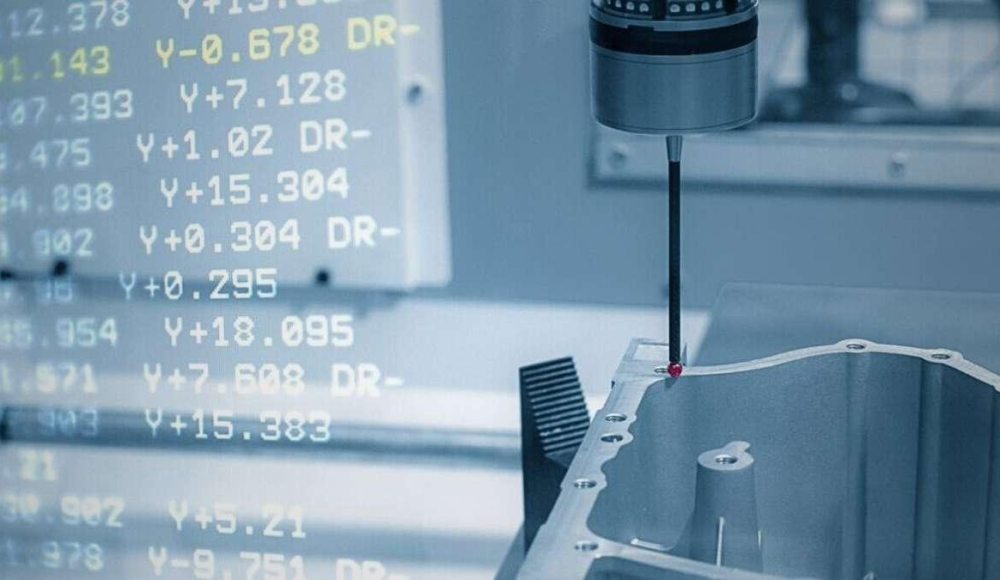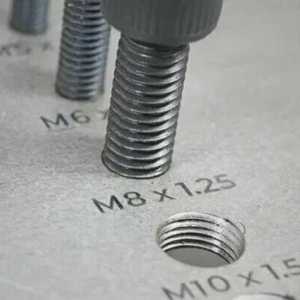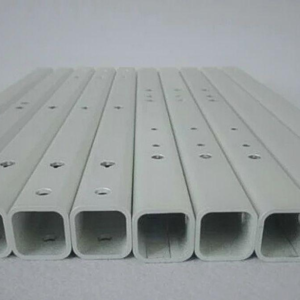La scelta della giusta fresatrice CNC ha un'influenza diretta sulla velocità di produzione e sulla qualità delle parti. Poiché esistono diversi tipi e opzioni, è fondamentale comprendere la differenza tra le apparecchiature a 3 e 12 assi. Così, i moderni processi produttivi richiedono competenze altamente accurate adatte alla tipologia di progetti. Le fresatrici CNC sono classificate in base al numero di assi, 3 assi, 4 assi, 5 assi, fino a 12 assi. Una macchina a 3 assi fornisce solo le funzioni di base su tre piani diversi; adatto per operazioni semplici. Mentre, la macchina a 12 assi offre capacità di lavoro multidimensionale per parti più elaborate e taglio con tempi di impostazione inferiori.
Questo articolo ti aiuterà a comprendere le differenze tra le fresatrici CNC da 3 a 12 assi. Inoltre, approfondiremo le loro caratteristiche, vantaggi, e considerazioni per la scelta della giusta macchina di produzione.
3-Lavorazione CNC ad asse
3-la lavorazione ad asse si riferisce a un processo di fresatura in cui l'utensile da taglio si muove lungo tre assi perpendicolari: X, Y, e Z. Questa configurazione consente di avere un controllo accurato nella formatura e nel taglio del materiale.
Movimento degli assi:
- Asse X: Movimento verticale su e giù: Movimento orizzontale da sinistra a destra.
- Asse Y: Il movimento laterale del corpo da un lato all'altro in direzione antero-posteriore.
- Asse Z: Movimento laterale lateralmente.
Applicazioni:
Più adatto per superfici piane, contorni, e le forme semplici sono facili da lavorare.
Apparendo in applicazioni come l'aerospaziale, settore automobilistico, e produzione generale di componenti come staffe, basi, e alloggi.
Utensileria:
Presenta diversi utensili da taglio come frese e trapani che possono essere sostituiti su alcuni sistemi CNC da un cambio utensile.
Software:
Controllato tramite software CAD/CAM che consente la programmazione e la simulazione del processo.
Limitazioni:
Può creare solo forme relativamente semplici; è necessario cambiare testine di taglio per facce diverse; difficile raggiungere alcune zone; spesso non è possibile ottenere un'elevata finitura superficiale su contorni fini; non va bene per materiali altamente lavorabili.
4-Lavorazione CNC ad asse
4-la lavorazione degli assi è simile alla lavorazione a 3 assi con la rotazione aggiunta attorno al quarto asse o asse A. Ciò consente ulteriori procedure di movimento e lavorazione, migliorando così la capacità di produrre parti con misurazioni dettagliate.
Movimento degli assi:
- Asse X: Movimento da sinistra a destra della figura(progetto)
- Asse Y: Movimento avanti e indietro sul piano laterale.
- Asse Z: Il tipo di movimento con cui un oggetto si muove su e giù in direzione perpendicolare è chiamato movimento verticale.
- Asse A: Per ottenere il movimento dell'asse A, è stato incorporato un movimento di rotazione attorno all'asse x per consentire tagli angolari.
Applicazioni:
- Ottimale per operazioni di tornitura, forme e dettagli complessi devono essere torniti durante l'operazione di tornitura.
- Ampiamente applicato in settori manifatturieri come quello medico, aerospaziale, automobile, e la fabbricazione di dispositivi come alberi, ingranaggi, e parentesi.
Utensileria:
Utilizza un'ampia gamma di utensili da taglio come quelli utilizzati nelle macchine a 3 assi ma con il vantaggio di poter impiegare utensili angolati grazie all'asse rotante.
Software:
Consente l'utilizzo di sofisticati software CAD CAM da utilizzare nella programmazione che a loro volta consentono di creare percorsi utensile più lontani e complessi da simulare.
Limitazioni:
Movimenti aggiuntivi, il che significa più programmazione e configurazione rispetto a 3 assi, richiedono strumenti specializzati, tempo di ciclo più lungo, macchinari più costosi, e macchine multiasse.
5-Lavorazione degli assi
4-la lavorazione degli assi assomiglia alla lavorazione a 3 assi con la rotazione aggiunta attorno al quarto o asse A. Ciò consente un ulteriore movimento nelle procedure di lavorazione, migliorando così la capacità di fabbricare componenti di funzionalità dettagliate.
Movimento degli assi:
- Asse X: Movimento dell'utensile da sinistra a destra
- Asse Y: Movimento avanti e indietro sul piano laterale.
- Asse Z: Il tipo di movimento in cui un oggetto si muove su e giù in direzione perpendicolare è chiamato movimento verticale.
- Asse A: Per realizzare questa mozione, è stato incorporato un movimento di rotazione attorno all'asse x per consentire tagli angolari.
Applicazioni:
Ampiamente applicato in settori manifatturieri come quello aerospaziale, automobile, e la produzione di dispositivi medici per parti come alberi, ingranaggi, e parentesi.
Utensileria:
Utilizza un'ampia gamma di utensili da taglio come quelli utilizzati nelle macchine a 3 assi ma con il vantaggio di poter utilizzare gli utensili ad angolo grazie all'asse rotante.
Software:
5-La lavorazione CNC degli assi utilizza un sofisticato software CADCAM da utilizzare nella programmazione che a sua volta consente di creare percorsi utensile più lontani e complessi che possono essere simulati.
Limitazioni:
Movimenti aggiuntivi, il che significa più programmazione e configurazione rispetto a 3 assi, richiedono strumenti specializzati, tempo di ciclo più lungo, macchinari e manutenzione più costosi, e non riesce ancora a produrre forme altamente complesse rispetto alle macchine multiasse.
7-Lavorazione degli assi
7-la lavorazione degli assi porta il concetto di fresatura CNC a un ulteriore passo avanti aggiungendo un ulteriore asse di rotazione e più assi di movimento lineare.
Movimento degli assi:
- X, Y, Assi Z: Movimenti laterali e verticali ordinari.
- UN, B, Assi C: Intorno alla X, Y, e movimenti di rotazione dell'asse Z.
- Asse D: Ha una regolazione per l'inclinazione o l'angolo, il che lo rende ancora più versatile rispetto al modello precedente.
Applicazioni:
- Speciale per pezzi complessi con superfici e forme complesse e all'avanguardia, compresi aerei e stampi.
- Adatto per strutture multicomponente che richiedono elevata precisione e caratteristiche di rinforzo.
Utensileria:
La capacità di utilizzare una varietà di utensili da taglio specializzati per operazioni che includono l'aumento della possibilità di lavorazione.
Software:
Impiegare sistemi completi di progettazione/produzione assistita da computer sviluppati per applicazioni multiasse per garantire il corretto instradamento degli utensili.
Limitazioni: Costo elevato dei macchinari; sono necessarie elevate competenze di programmazione; più tempo per la configurazione; manutenzione più elevata a causa della complessità.
9-Lavorazione degli assi
9-la lavorazione degli assi è il passo avanti 5 e lavorazione a 6 assi, poiché aggiunge ancora più capacità di movimento al mix, e gli consente di eseguire lavorazioni molto complesse che non possono essere eseguite con meno assi.
Movimento degli assi:
- X, Y, Assi Z: Movimenti lineari standard.
- UN, B, Assi C: Movimenti vibrazionali lungo ciascuno dei tre assi lineari di traslazione.
- Assi D ed E: Altri assi di movimento rotatorio e assi di inclinazione che consentono una regolazione angolare maggiore.
- Asse F: Ciò può includere ulteriori movimenti specifici basati sulla costruzione della macchina che consentono operazioni di lavorazione specifiche.
Applicazioni:
Ideale per il settore aerospaziale, stampi per impianti medici, e altre parti che richiedono elevata precisione e forme con tolleranze strette.
Utensileria:
In grado di utilizzare diversi strumenti complessi, come gli strumenti multiuso che possono cambiare funzione senza necessità di regolazione.
Software:
È necessaria una programmazione sofisticata insieme a un sistema CAD/CAM specifico per il controllo del movimento a 9 assi ad alta precisione.
Limitazioni:
Complessivamente costi più alti ed è più complicato; gli operatori devono essere ben addestrati; hanno tempi di produzione più lenti; e potrebbe essere limitato in termini di velocità di rimozione del materiale a causa della progettazione complicata.
12-Lavorazione degli assi
12-la lavorazione degli assi rappresenta il livello più alto di innovazione CNC. Generalmente, viene utilizzato laddove è richiesto un elevato grado di flessibilità nella produzione di componenti. Questa configurazione è per lo più preferita nelle applicazioni sensibili a requisiti elevati, soprattutto in termini di geometria.
Movimento degli assi:
- X, Y, Assi Z: Movimenti lineari standard.
- UN, B, Assi C: Movimenti oscillatori che si verificano attorno a ciascuno dei tre assi spaziali.
- D, E, F, Assi G: Ulteriori possibilità di movimenti di rotazione o scorrimento, consentendo un'ampia movimentazione del pezzo in varie direzioni.
Applicazioni:
Ampiamente usato nel settore aerospaziale, settore automobilistico, e industrie mediche per la produzione di pezzi piccoli e grandi con elevata precisione, ad esempio, pale di turbine e complicati strumenti chirurgici.
Utensileria:
Dotato di complessi sistemi di attrezzaggio per eseguire operazioni multifunzionali in un unico ciclo, aumentando così il tasso di produzione.
Software:
Dotato del più recente software CAD/CAM per affrontare le sfide della programmazione per applicazioni a 12 assi per fornire lavori di precisione.
Limitazioni:
Costo iniziale elevato; necessitano di personale specializzato/qualificato; codifica e controllo complessi; più tempo necessario per l'installazione e la messa a punto; possibilità di manutenzione frequente a causa delle attrezzature avanzate.
Lavorazione CNC di precisione con la massima precisione
A Massima precisione, incorporiamo una tecnologia all'avanguardia nella produzione, inclusa la lavorazione a 5 assi, per affrontare configurazioni di progettazione sia semplici che complesse. Siamo specializzati in servizi CNC adatti alla produzione in piccole serie di prototipi funzionali e altre parti.
Per ottenere un'offerta di prezzo individuale per il tuo progetto CNC puoi caricare i tuoi file CAD utilizzando il modulo di contatto. Il nostro team di ingegneri sarà pronto a formulare un preventivo dettagliato, ci vorrà questo 1 A 2 giorni.



